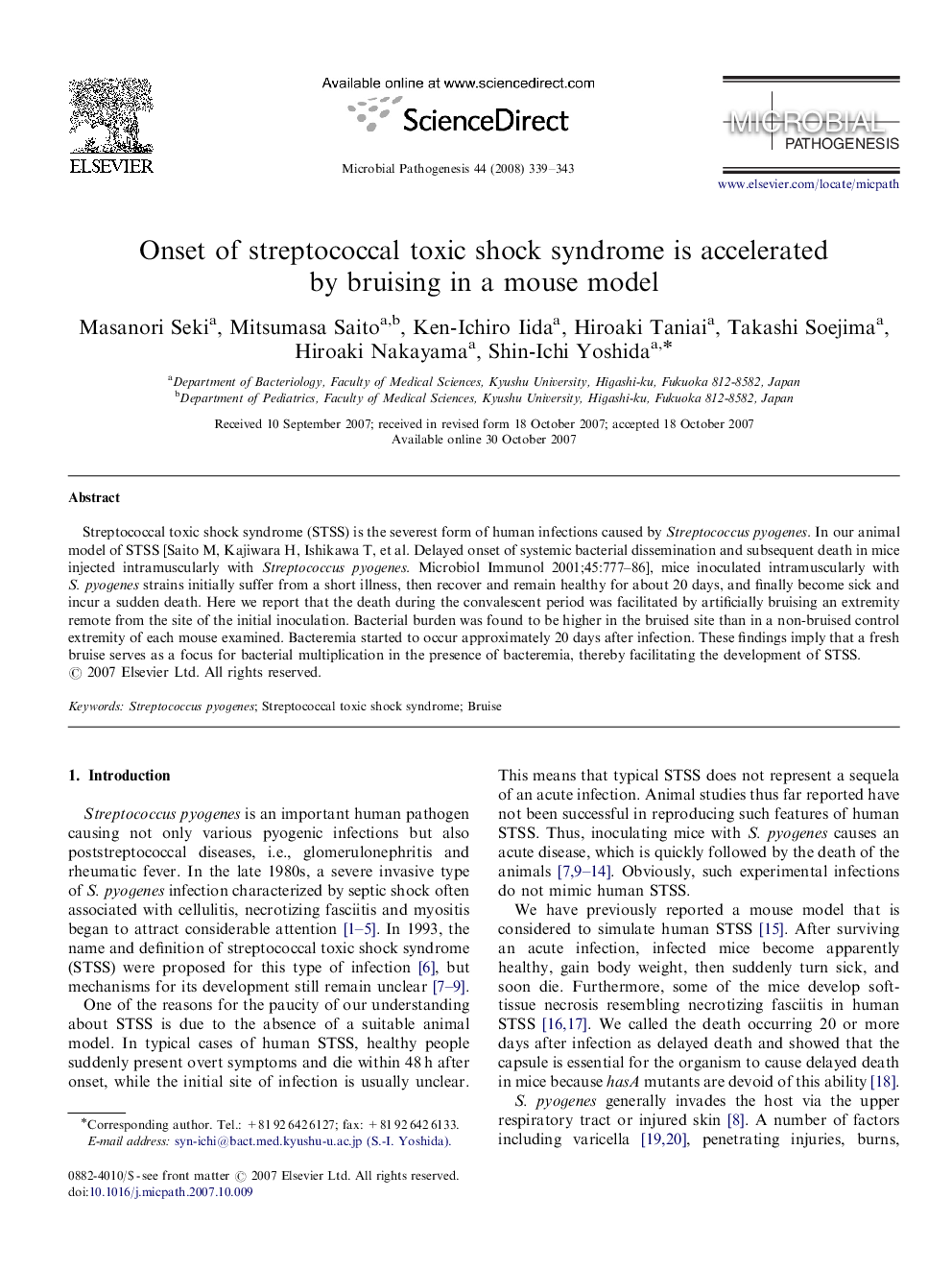| Article ID | Journal | Published Year | Pages | File Type |
|---|---|---|---|---|
| 3417127 | Microbial Pathogenesis | 2008 | 5 Pages |
Streptococcal toxic shock syndrome (STSS) is the severest form of human infections caused by Streptococcus pyogenes. In our animal model of STSS [Saito M, Kajiwara H, Ishikawa T, et al. Delayed onset of systemic bacterial dissemination and subsequent death in mice injected intramuscularly with Streptococcus pyogenes. Microbiol Immunol 2001;45:777–86], mice inoculated intramuscularly with S. pyogenes strains initially suffer from a short illness, then recover and remain healthy for about 20 days, and finally become sick and incur a sudden death. Here we report that the death during the convalescent period was facilitated by artificially bruising an extremity remote from the site of the initial inoculation. Bacterial burden was found to be higher in the bruised site than in a non-bruised control extremity of each mouse examined. Bacteremia started to occur approximately 20 days after infection. These findings imply that a fresh bruise serves as a focus for bacterial multiplication in the presence of bacteremia, thereby facilitating the development of STSS.
